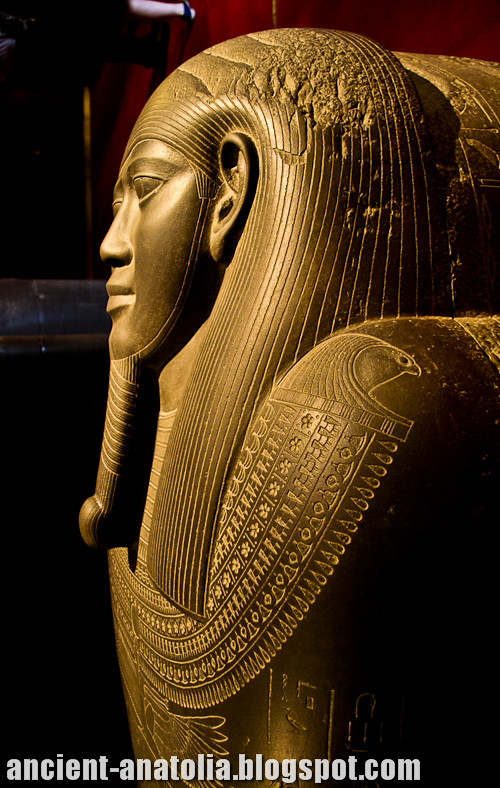
Sarcophagus of Tabnit, King of Sidon, at Istanbul Archaeology Museum:
Sidon has been inhabited since 4000 BC and perhaps as early as Neolithic times (6000 - 4000 BC). It was one of the most important Phoenician cities, and may have been the oldest. From here, and other ports, a great Mediterranean commercial empire was founded. Homer praised the skill of its craftsmen in producing glass and purple dyes. It was also from here that a colonizing party went to found the city of Tyre. Tyre also grew into a great city, and in subsequent years there was competition between the two, each claiming to be the metropolis ('Mother City') of Phoenicia.
In the years before Jesus, Sidon had many conquerors: Assyrians, Babylonians, Egyptians, Greeks, and finally Romans. Herod the Great visited Sidon. Both Jesus and Saint Paul are said to have visited it too.
At the end of the Persian era in 351 BC, it was invaded by the emperor Artaxerxes III and then by Alexander the Great in 333 BC when the Hellenistic era of Sidon began.
Sarcophagus of King Tabnit came to Istanbul from the Royal Necropolis in Sidon, according to the Egyptian hieroglyphs on the cover, originally belonged to the Egyptian general Penephatah (Peneptah) (600-525 BC).
The Curse of the Mummy's Tomb
The text of the Phoenician inscription reads as follows:
"I, Tabnit, priest of Astarte, King of Sidon, son of Eshmun’azar, priest of Astarte, King of Sidon, lie in this coffin. Whoever you may be, any person who you come in this coffin, you should not even open on me and disturb me. For they have collected no silver to me, to me they have not collected any gold or jewels. Only I'm lying in this coffin. Thou shalt not open on me and disturb me, because this is indeed the Astarte taboo. But if you still above me open it and disturb me nonetheless, may no shoot (you) are given in the living under the sun or a resting place for the dead spirits. "
(Retranslation to English from German translation of Phoenician original " Religionsgeschichtliche text book on the Old Testament "; Helmut Brunner & Walter Beyerlin , 1975)Nonetheless, the coffin was opened at the discovery, and can be seen today with the King's body, at the Archaeological Museum of Istanbul.
A new museum building was needed in order to display the glorious artifacts such as the Alexander Sarcophagus, the Sarcophagus of the Crying Women, the Lycian Sarcophagus and the Sarcophagus of Tabnit brought to Istanbul after the Royal Necropolis excavations in Sidon, Lebanon led by Osman Hamdi Bey, Ottoman archaeologist and the founder of Istanbul Archaeology Museum, in 1887 and 1888. The Museum, built by the famous architect Alexander Vallaury then on the request of Osman Hamdi Bey, was opened on June 13, 1891. This day is still celebrated as the Museum Day in Turkey.